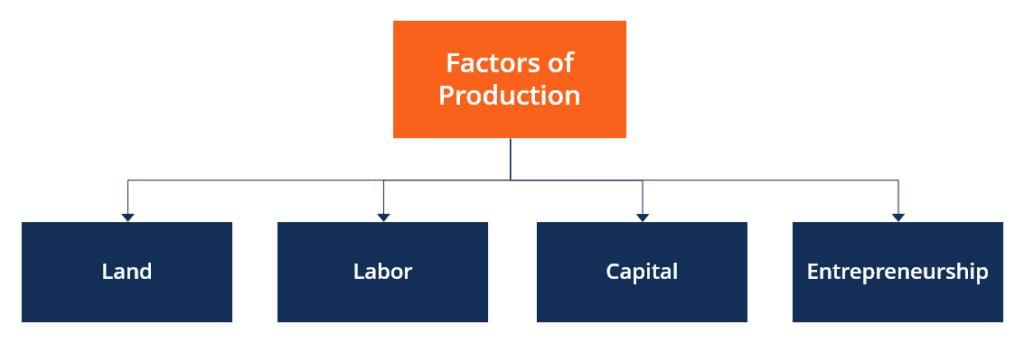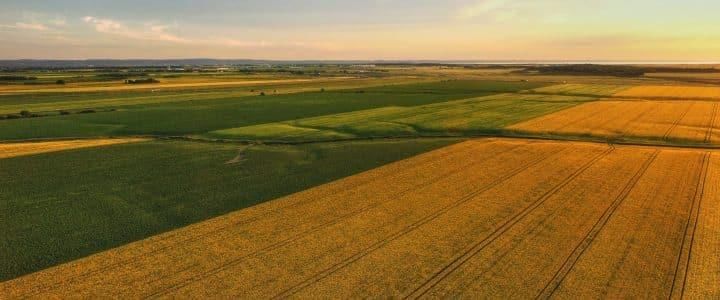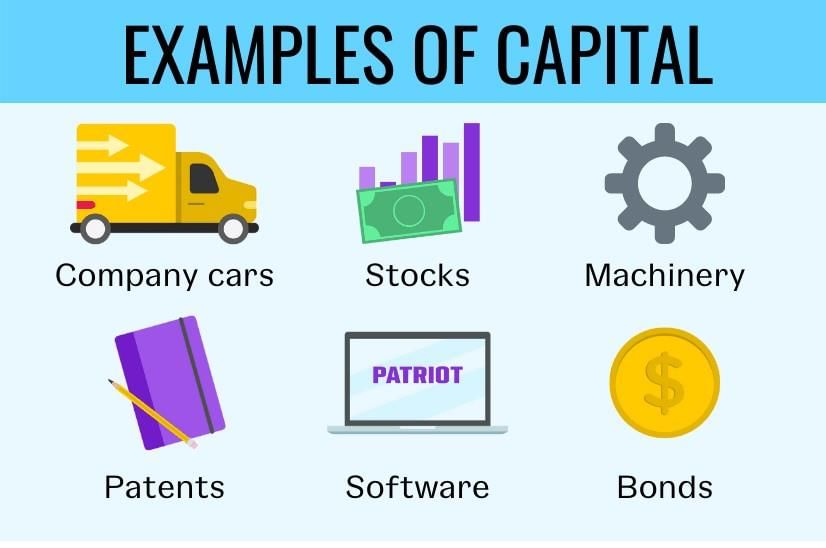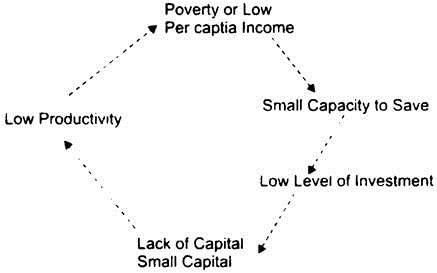Revision Notes: Factors of Production | Business for Grade 10 PDF Download
| Table of contents |

|
| The Productive Mechanism |

|
| Understanding the Factors of Production |

|
| Land |

|
| Labour |

|
| Capital |

|
| Entrepreneur |

|
The Productive Mechanism
The productive mechanism refers to the system that determines how various goods and services are produced in an economy. Production involves transforming materials from one form to another to create items that people need and want. The inputs used in this process are called factors of production, while the finished products are known as outputs. Essentially, production is about creating utility, which is the usefulness or satisfaction derived from a product.
1. Form Utility
- Definition: Form utility is created when the form of a commodity is changed to make it more useful.
- Example: When a carpenter transforms wood into a chair, he creates form utility. The wood has value to the carpenter because he can turn it into a chair, which is what the final consumer wants.
2. Place Utility
- Definition: Place utility is created by changing the location of a commodity to make it useful to a consumer.
- Example: A commodity available in Chennai may not be useful to a consumer in Delhi until it is transported from Chennai to Delhi.
3. Service Utility
- Definition: Service utility is created by providing services that fulfill a need or want.
- Example: The services of doctors, teachers, lawyers, and chartered accountants create utility by meeting specific needs of individuals.
4. Time Utility
- Definition: Time utility is created by storing surplus goods at one time and supplying them at another time when they are in demand.
- Example: The Food Corporation of India (FCI) creates time utility by storing food grains during the harvest season and supplying them during lean periods when they are scarce.
Understanding the Factors of Production

The factors of production refer to the essential resources and inputs required to produce goods and services in an economy. These factors are classified into two categories: primary factors and secondary factors.
Primary Factors of Production
- Land: This includes all natural resources used in production, such as minerals, water, and forests. Land is a finite resource that provides the foundation for all economic activities.
- Labour: This refers to the human effort and skills applied in the production process. Labour can vary in terms of skill level, from unskilled to highly specialized workers.
Secondary Factors of Production
- Capital: Capital is created by combining labour and land. It includes machinery, buildings, and tools used in the production process. Capital is essential for increasing productivity and efficiency.
- Entrepreneur: The entrepreneur is the individual who organizes and manages the production process. This includes making decisions, taking risks, and innovating. Entrepreneurs play a crucial role in driving economic growth and development.
Characteristics of Factors of Production
- Joint Use: Factors of production are typically used together in the production of a commodity. For example, land, labour, and capital are all necessary to produce goods.
- Variable Factor Proportions: The proportions of different factors used in production can vary. For instance, a factory might use more machinery (capital) during peak production times and less during off-peak times.
- Physical Existence: All factors of production have a physical presence. Land is tangible, labour involves human workers, and capital includes physical assets like machinery.
- Use of Factor Services: Production involves the use of services provided by factors, such as the labour service of workers or the managerial service of entrepreneurs.
- Derived Demand: The demand for a factor of production is derived from the demand for the final product. For example, if there is a high demand for cars, the demand for labour and capital to produce cars will also increase.
- Mobility: Not all factors of production are equally mobile. Some factors, like land, are immobile, while others, like labour, can move more easily from one location to another.
Land

Land is not just the surface of the Earth; it includes all the natural resources that come with it.
Characteristics of Land
- Limited Supply: The amount of land is fixed because it is provided by nature.
- Gifts of Nature: Land is a natural gift that doesn’t have a production cost. It is readily available for use, unlike other production factors that come at a cost.
- Primary Factor of Production: Land is fundamental to production because, on its own, it cannot produce anything.
- Alternative Uses: Land can be used for various purposes such as farming, dairy and poultry farming, livestock rearing, and construction of houses and playgrounds.
- Immobility: Land is immobile and cannot be moved from one place to another. In contrast, labor and capital can be relocated.
- Variability in Fertility: Different types of land have varying production capacities based on soil composition, irrigation facilities, and climatic conditions.
- Law of Diminishing Marginal Returns: Increasing capital and labor on a specific piece of land raises production, but at a decreasing rate.
Functions of Land
- Agricultural Production: The availability of land resources directly influences the level of agricultural production. For instance, in India, about 43% of the land is flat and suitable for crop cultivation.
- Industrial Development: Land resources contribute to industrialization. For example, countries in the Middle East, rich in crude oil, have seen the expansion of the petroleum industry. The availability of materials like bricks and stones for construction also depends on the country’s land area.
- Supply of Natural Resources: The availability of natural resources is linked to the total land area in a country, which helps increase overall output.
- Land-Man Ratio: Maintaining a proper ratio of land to population is crucial for balanced development.
- Supporting Industrialization and Urbanization: Adequate land resources are essential for the smooth progress of industrialization and urbanization.
Importance of Land
- Determines Total Production: The availability of land directly impacts a country’s national output.
1. Agricultural Output
- Cultivable Land: The agricultural output of a country is directly influenced by the availability of cultivable land. More cultivable land typically leads to higher agricultural production.
2. Industrial Production
- Land Area: The total area of land in a country affects its industrial output. Industries require space for factories, production facilities, and infrastructure, making land a crucial factor for industrial production.
3. Economic Growth
- National and Per Capita Output: Economic growth is linked to the growth rate of national output or per capita output. These growth rates depend on land availability and the effective use of related resources.
- Resource Utilization: Proper utilization of land and resources can enhance the level of national output, contributing to economic growth.
4. Basic Needs
- Food, Shelter, and Clothing: The supply of land is fundamental for meeting the basic needs of people, including food, shelter, and clothing. Land provides the necessary resources to fulfill these essential requirements.
Productivity of Land
- Land Capacity: Productivity refers to the capacity of a piece of land to produce crops. It can be measured in terms of average productivity and marginal productivity.
- Average Productivity: This is calculated by dividing the output obtained from the land by the area of land, such as output per acre or per hectare.
- Marginal Productivity: This measures the increase in output when the area of land used is expanded by one unit, for example, by one acre.
Determinants of Land Productivity
- Natural Factors: The inherent qualities of the land, including soil fertility, climate, and water availability, play a crucial role in determining land productivity.
- Proper Use of Land: Efficient and sustainable use of land resources is essential for maximizing productivity. This includes avoiding overexploitation and implementing conservation practices.
- Investment in Land: Investing in land improvements, such as soil enhancement, irrigation systems, and infrastructure development, can significantly boost productivity.
- Location of Land: The geographical location of land can impact its productivity, with factors like proximity to markets, transportation networks, and urban areas influencing productivity levels.
- Scientific Methods of Cultivation: Adopting scientific and modern agricultural practices, including the use of improved seeds, fertilizers, and pest control methods, can enhance land productivity.
- Social Conditions: The social environment, including access to education, training, and community support, can influence the effective use of land and agricultural practices.
Labour

Labour refers to all human efforts, whether physical or mental, undertaken with the expectation of a reward.
Characteristics of Labour
- Indivisibility: Labour cannot be separated from the labourer. Unlike a landowner or a capitalist, who can be considered distinct from their property or capital, a labourer is inseparable from their work.
- Active Factor: Labour is an active factor of production. While land and capital are passive and cannot produce anything on their own, labour is essential for the production process.
- Mobility: Labour is mobile, meaning it can move from one location to another and from one occupation to another.
- Alternative Uses: Labour has alternative uses, as a worker can engage in different fields of work. For example, an unskilled labourer could work as a hawker or peddler.
- Accumulation: Labour cannot be accumulated by a labourer. In contrast, a capitalist can accumulate capital, and a landowner can accumulate land.
Supply of Labour
Supply of labour is typically measured in units of man-days per year. The factors determining the supply of labour include:
- Population: A larger population with the necessary skills for physical or mental work increases the supply of labour in the market.
- Age Structure: The supply of labour depends on the age structure of the population. Only individuals within the legally defined working age are considered part of the labour supply. Child labour is prohibited, and there are retirement age limits for salaried employees.
Efficiency of Labour
Efficiency of labour refers to the productive capacity of a worker and their ability to perform more or better work in a given period. Factors influencing the efficiency of labour include:
- Health and Standard of Living: The health of workers, influenced by wage rates and standards of living, affects their ability and willingness to work and learn new skills. Better nourishment and living conditions contribute to improved health and, consequently, better work efficiency.
- Literacy and Training: Improving literacy and providing adequate training to workers are crucial for enhancing labour efficiency. Skilled workers can perform tasks more effectively and efficiently.
- Climatic Conditions: Climatic factors, such as the hot and humid climate in many parts of India, can impact labour efficiency. Adverse climatic conditions may reduce the amount of work individuals can perform, affecting overall productivity.
Mobility of Labour
(a) Geographical Mobility
- Geographical mobility refers to the ability of labor to move easily from one location to another for work. This type of mobility is essential for ensuring that labor can be deployed where it is needed most, whether in urban areas or rural regions.
- Factors that influence geographical mobility include transportation infrastructure, housing availability, and the cost of living in different areas. A well-connected transportation network and affordable housing options can enhance geographical mobility, allowing workers to relocate for job opportunities.
(b) Occupational Mobility
- Occupational mobility is the capacity of labor to switch from one occupation to another. This type of mobility is crucial for adapting to changing labor market demands and ensuring that workers can move into roles where their skills are needed.
- Factors influencing occupational mobility include access to training and education, as well as the transferability of skills between different occupations. Programs that offer retraining and upskilling opportunities can enhance occupational mobility, allowing workers to transition into new roles more easily.
(c) Social Mobility
- Social mobility refers to the ability of individuals to move up the social and economic ladder, which can impact their capacity to participate in the labor market. Higher social mobility allows individuals from disadvantaged backgrounds to access better job opportunities and improve their economic status.
- Factors that influence social mobility include education access, social services, and discrimination. Policies that promote equal access to education and reduce discrimination can enhance social mobility, enabling a more diverse and capable workforce.
Division of Labour
(a) Specialization and Expertise
- Division of labour involves breaking down the production process into smaller tasks and assigning them to different workers. This approach allows workers to specialize in specific tasks, leading to increased expertise and efficiency.
- Specialization enhances the skills and knowledge of workers in their respective areas, resulting in higher quality and faster production. When workers focus on a particular aspect of the production process, they become more proficient, reducing the time and effort required to complete tasks.
(b) Increased Efficiency
- Division of labour significantly boosts the efficiency of the production process. By assigning specific tasks to workers, the overall productivity of the workforce increases. Each worker contributes to the production process at their optimal capacity, leading to higher output levels.
- As the efficiency of labour improves, the quantity and quality of production also increase. This results in a more streamlined production process, reducing wastage and ensuring that resources are utilized effectively.
(c) Cost Reduction
- Division of labour contributes to lower production costs. When workers are specialized and efficient, the overall cost of producing goods decreases. This is because specialized workers can complete tasks faster and with fewer errors, reducing the need for rework and additional resources.
- Lower production costs enable society to produce goods at a more competitive price, benefiting both producers and consumers. This can lead to increased market share and profitability for businesses, contributing to economic growth.
Capital

Capital refers to the means of production that are created by humans. It is not a natural gift but rather something that is produced by people. Capital is used as an input in the production of other goods and is not directly consumed.
Types of Capital
- Fixed Capital: This refers to capital that is used for a long period and is not easily changed, such as machinery and buildings.
- Circulating Capital: This includes capital that is used up quickly in the production process, like raw materials and components.
- Sunk Capital: Capital that cannot be recovered once it has been spent, such as investments in specialized equipment.
- Floating Capital: Capital that is more liquid and can be easily converted into cash, like stocks and bonds.
- Remunerative Capital: Capital that is used to generate returns, such as investments in businesses.
- Auxiliary Capital: Supportive capital that helps in the production process but is not the main focus, like backup equipment.
- Material Capital: Tangible assets used in production, such as machinery and tools.
- Personal Capital: Skills and expertise of individuals that contribute to production.
- Trade Capital: Capital used in trade and commerce, like inventory and retail space.
- Social Capital: Investments in community and social projects that contribute to overall economic growth.
- Real Capital: Physical assets used in production, such as land and machinery.
- Money Capital: Financial resources available for investment.
- Debt Capital: Funds borrowed for investment purposes.
- Production Capital: Capital specifically allocated for production activities.
- Consumption Capital: Capital used for consumption purposes.
- Internal Capital: Capital generated within an organization.
- External Capital: Capital sourced from outside an organization.
Characteristics of Capital
- Man-Made: Capital is created by humans through savings and efforts on natural resources.
- Durable: Capital goods are long-lasting, ranging from a few years to many years.
- Passive Factor: Capital cannot produce on its own; it becomes useful only when utilized by labor.
- Elastic Supply: The supply of capital can be easily increased or decreased since it is man-made.
- Mobile Factor: Capital is highly mobile and can be transferred from one location or occupation to another with ease.
Capital Formation
- Capital formation refers to the process of creating capital. It involves a change in the stock of capital during a specific period.
Stages of Capital Formation:
- Creation of Saving: Savings need to be transformed into capital. Without savings, capital formation is not possible, even if other conditions are favorable.
- Mobilization of Savings: Savings must be mobilized from individuals and deposited in banks for investment. Financial institutions and capital markets perform this function.
- Investment of Mobilized Savings: Mobilized savings should be used by producers for investments, such as purchasing machinery and raw materials.
Reasons for Slow Capital Formation in India

- Inability to Save: A significant portion of the Indian population lives in poverty, making it difficult for them to save a substantial amount of their income. This results in a low savings rate, which in turn impacts the rate of capital formation negatively.
- Unwillingness to Save: In some regions of India, a traditional feudal economic system still prevails. Even among those who can afford to save, there is a tendency to spend all their earnings on daily consumption instead of saving for the future.
- Poor Mobilization of Savings: There is a lack of effective mobilization of available savings into productive investments. Many people prefer to keep their savings in unproductive assets like gold or cash stored at home, primarily due to inadequate banking services and a lack of financial literacy, particularly in less developed areas.
Entrepreneur

An entrepreneur is an individual who takes on the risk of starting and managing a business. They play a crucial role in coordinating the activities of all the other factors of production, such as land, labor, and capital. Entrepreneurs are often seen as the driving force behind economic growth and innovation.
Qualities of an Entrepreneur

Successful entrepreneurs typically possess a range of qualities that enable them to navigate the challenges of running a business. Some of these qualities include:
- Courage and Problem-Solving Skills: Entrepreneurs need the courage to tackle problems head-on and find effective solutions.
- Decision-Making Ability: The ability to make quick and informed decisions is crucial in a fast-paced business environment.
- Business Knowledge: Understanding the ins and outs of the business world is essential for success.
- Resource Management: Entrepreneurs should be efficient in identifying skilled resources and assigning tasks based on individual strengths and preferences.
- Market Prediction: Being able to anticipate future market trends and business conditions is a valuable skill.
- Organizational and Leadership Skills: Effective organization and leadership are key to managing a team and ensuring smooth operations.
- Experience: Gaining experience in the field is important for making informed decisions and avoiding pitfalls.
The Role of Entrepreneurs in Economic Development
- Entrepreneurs are crucial for economic development because they are willing to take risks and are capable of coming up with innovative ideas.
- When entrepreneurs introduce innovations that reduce costs or create new demand, it leads to increased industrial production. This, in turn, helps the country become self-sufficient in producing a variety of high-quality industrial goods to meet the changing needs of both domestic and international markets.
- Additionally, entrepreneurs contribute to generating higher employment and income opportunities. They tend to reinvest a significant portion of their profits into new ventures or productive activities, leading to higher overall investment. This increased investment creates more jobs and income opportunities within the country.
|
26 docs|7 tests
|
FAQs on Revision Notes: Factors of Production - Business for Grade 10
| 1. What are the four main factors of production? |  |
| 2. How does land contribute to the production process? |  |
| 3. What role does labor play in the factors of production? |  |
| 4. Why is capital important in production? |  |
| 5. What is the significance of entrepreneurship in the factors of production? |  |















